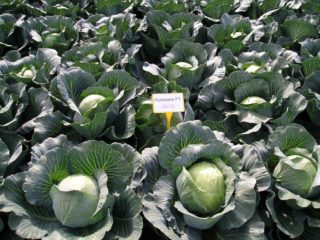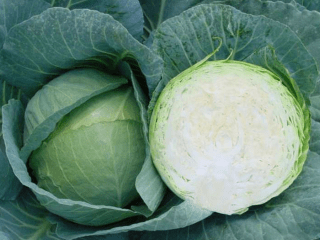Content
The main feature of late-ripening cabbage is its long ripening. However, along with this nuance, it also has significant advantages, so gardeners in all Russian regions do not intend to give up its cultivation. If you know exactly where and how to properly plant late cabbage in open ground and care for it, consistently high yields can be harvested even in areas where the climate for gardening is not very favorable.
Features of late cabbage
The first thing you need to consider when planning to plant late cabbage in open ground is that the growing season is much longer than that of early and mid-season varieties and hybrids. The ripening of heads of cabbage takes on average 150-160 days; in some varieties it lasts for 180 days or even more.
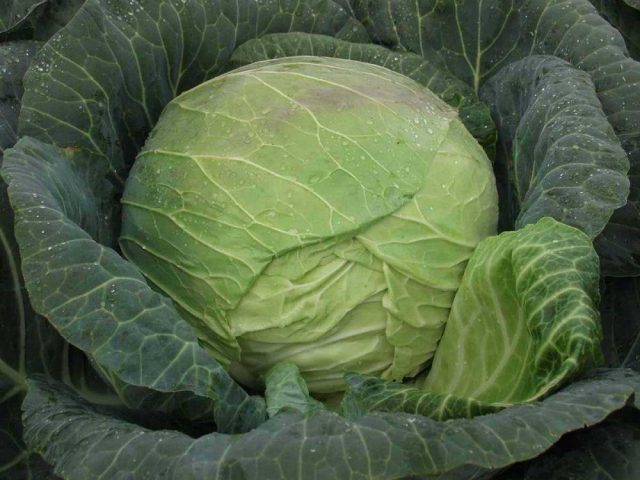
Planting late cabbage in open ground in regions with a harsher than temperate climate means consciously taking a certain risk.
Late cabbage also has other features, thanks to which it is annually planted in open ground by both amateur gardeners and professional farmers in various climatic conditions:
- The highest cold resistance for the crop.It varies depending on the specific variety, the favorable growing conditions and the climate in the regions where it is planted in open ground. However, it can be argued that any late cabbage will survive the first frost within -5-7 °C without damage.
- Suitable for long-term (up to 8-9 months) storage. This is due to the dense structure of very strong, even hard heads of cabbage and the low juiciness of the elastic leaves. Throughout this entire time, they retain their beneficial properties, external presentation, and the taste only becomes better and richer.
- Stable demand as a raw material for home canning, especially for pickling, salting and fermentation. In terms of taste and presentation, winter preparations are obviously superior to similar products from early and mid-season varieties, even if they are planted in open ground in the same area.
- Record yield for the crop, large size of heads of cabbage. This is due to the long ripening of late cabbage in open ground and its density, which provides greater weight.
- Less tendency to accumulate nitrates than early and mid-season varieties. Late cabbage in open ground is less sensitive to soil quality and improper fertilizing. Sometimes it is planted not only for food, but also for use in folk medicine.
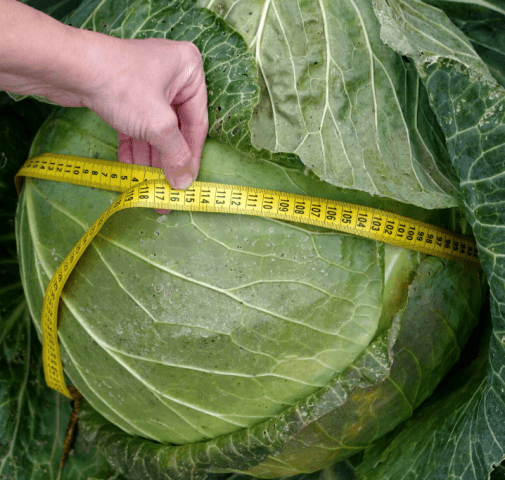
The average weight of a head of late cabbage exceeds 4 kg
When to sow late cabbage in open ground
It is impossible to say exactly when to plant late cabbage in open ground: Each region has its own approximate timing, determined taking into account the characteristics of the local climate. However, they change every season - gardeners and farmers also need to focus on the long-term weather forecast.
Mandatory condition: it is impossible to plant late cabbage in open ground before the air temperature at night reaches 8-10 ºС and the probability of return frosts is minimized (in regions with a temperate climate this is the very end of April or the first half of May). If you go by folk signs, you need to wait until the chestnuts finish flowering or until leaves the size of a 50-kopeck coin appear on the birch trees.
When late cabbage is planted as seedlings in open ground, the development of the seedlings must be taken into account. Standard specimens reach 18-20 cm in height, have 4-6 true leaves and a stem approximately 7-8 mm thick.
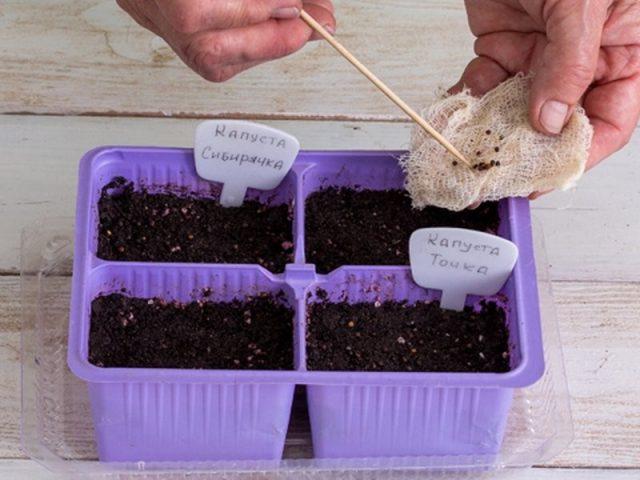
Growing seedlings takes 45-50 days; accordingly, in central Russia, seeds are sown at the end of March or in the first ten days of April
Obviously, if you delay sowing, late cabbage in open ground simply will not have time to form high-quality large heads of cabbage. However, you cannot plant seeds too early - in open ground at low temperatures they die or the process of seedling emergence is greatly inhibited. And when sowing seedlings, the seedlings do not have enough sun, they turn out weak and painful.
Site selection and preparation
It is best to plant the crop in a bed that meets the following criteria:
- Diffuse lighting for most of the day.The culture is light-loving, but cannot boast of high heat and drought resistance; it will be uncomfortable in direct sunlight in open ground.
- Good aeration with protection from cold drafts and sharp gusts of wind.
- Groundwater lying at least 2 m below ground level. Crops cannot be planted in waterlogged soil; this almost guarantees the development of root rot.
- A substrate that combines fertility with lightness, ensuring normal aeration of the roots. The best option is loam or sandy loam.
- Neutral or close to it pH. If you plant it in acidified soil, it will almost inevitably become infected with clubroot.
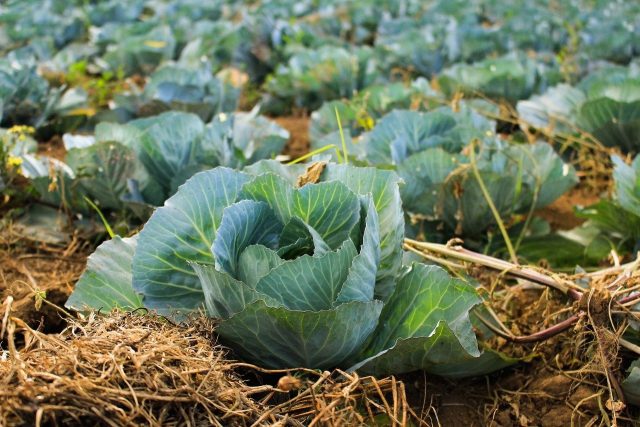
Both in dense shade and in direct sunlight, heads of cabbage set slowly
The bed has been being prepared since last fall. The substrate is dug up, while adding fertilizers - humus or rotted compost (5-8 l/m²) and a complex product containing nitrogen, phosphorus and potassium. Special fertilizers specifically for this crop are also suitable.
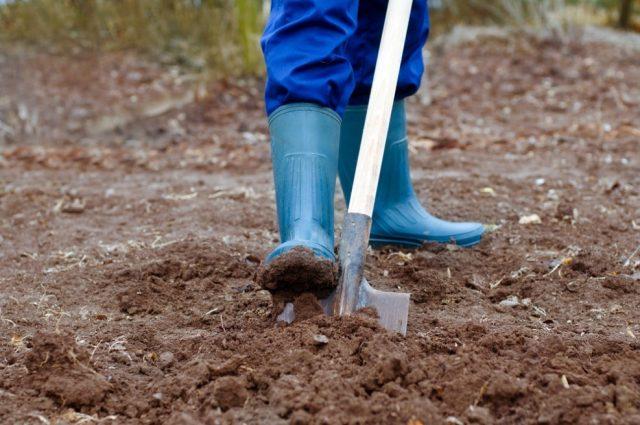
Vegetable and other debris is removed from the garden bed during the digging process.
You also need to find out the soil pH in advance and correct it if necessary. In the spring, 3-4 days before planting late cabbage in open ground, the bed is well loosened and leveled. To warm the soil faster, as soon as the snow melts, it can be covered with black polyethylene.
Growing late cabbage
In Russia, late cabbage can be planted in open ground with seeds only in the southern regions.In more severe climatic conditions, the heads of cabbage will not have time to ripen.
Planting late cabbage in open ground with seedlings
The best time to plant late cabbage seedlings in open ground is the morning of a cloudy, cool day. The planting scheme is determined individually for each variety or hybrid, the approximate interval between neighboring plants is 50-60 cm with a row spacing of 70-80 cm.
Late cabbage is planted using the transshipment method, trying not to damage the lump of soil on the roots. It is easier to remove plants from the container if you water the soil first.
The seedlings are buried to the lower cotyledon leaves. First, the hole is well shed with water. You can throw a little sifted wood ash or powdered eggshells at the bottom. At the end of the procedure, the plants are watered again.
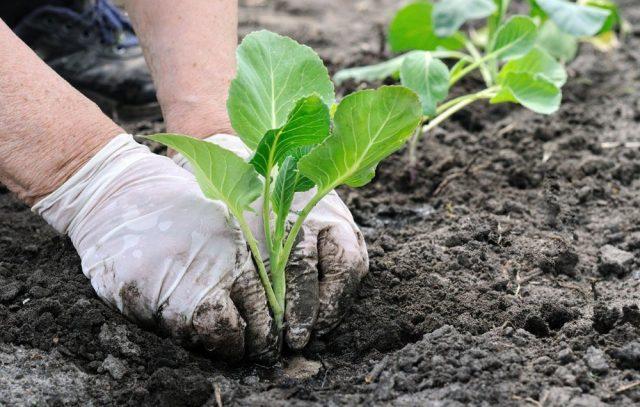
Late cabbage adapts faster and easier in open ground if it is planted after preliminary hardening
Sowing seeds in open ground
Late cabbage seeds are planted in open ground in the same way as adult seedlings. If there is no confidence in their quality, 2-3 pieces are placed in one hole, and then in the phase of the 3-4th true leaf, one seedling is left, if several of them have appeared, and the rest are cut off.
Before planting late cabbage seeds in open ground, the bed is well watered, allowing it to soak. They are buried by a maximum of 2-3 cm, otherwise they may not sprout at all. The furrows are filled with humus or peat chips, and the bed is watered again, this time moderately.
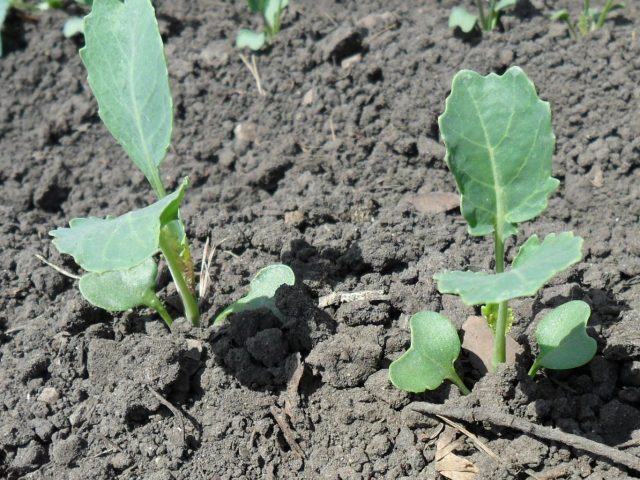
If you plan to mulch the bed, do this immediately after thinning the seedlings
Further care
Even if you plant late cabbage in a place that is ideal for it, without quality care during the entire time it is in the open ground, you will not be able to reap a good harvest. Agricultural technology includes:
- Watering. In the first three weeks, late cabbage in open ground is watered daily, using 1 liter of water per plant. Then they switch to moistening the soil at intervals of 4-5 days (if it is planted in the south - 2-3 days), the norm increases to 8 l/m². Subsequently, air temperature, frequency and abundance of precipitation are taken into account. The soil should not be allowed to dry out, so the bed is watered at least once a week, using 15-20 l/m². A month before harvest, the norm is halved, and if late cabbage is planted in the ground for long-term storage, they refuse to water at all so that the heads of cabbage do not crack.
- Loosening and weeding. Surface loosening of the soil is carried out after each watering, weeding - as needed (2-3 times a month). But you can save time on this by filling the bed with late cabbage with mulch immediately after planting.
- Feeding. During the growing season, fertilizers are applied four times: 12-15 days after late cabbage is planted in open ground, another two weeks later, at the initial stage of head formation (10-12 days) and approximately three weeks before harvesting . The first fertilizing contains mainly nitrogen, the last one contains potassium. For the remaining two, it is better to use specialized complex fertilizers.
- Hilling.It must be carried out twice - 20-25 days after late cabbage is planted in open ground, and another two weeks later. Then the procedure is repeated as necessary, no more than once every 15-20 days, if the base of the stem and roots are exposed, constructing a mound of soil 5-7 cm high.
- Prevention of diseases, pest attacks, control of them. This is a common problem for any cabbage that is planted in open ground, so you need to be able to recognize the characteristic symptoms. Once detected, apply suitable insecticides or fungicides immediately. Throughout the season, biological products and folk remedies are used for prevention.
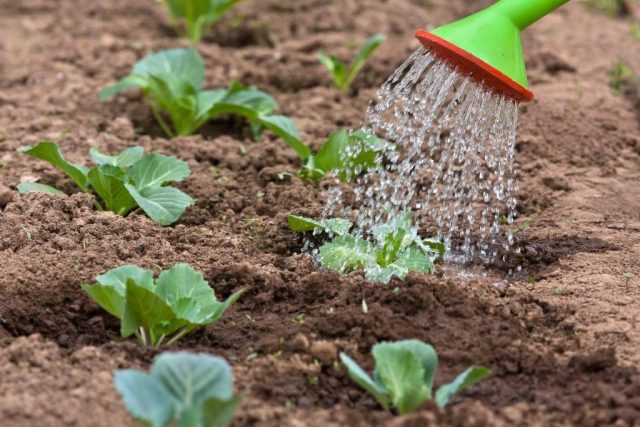
The culture is moisture-loving, but does not tolerate stagnation of water in the soil.
Conclusion
You can plant late cabbage in open ground even with seeds, although most gardeners, of course, prefer the seedling method. Despite the long growing season, it is quite possible to get a good harvest of high-quality heads of cabbage, even in not particularly favorable climatic conditions. To do this, you need to find out in advance how to provide the crop with maximum comfort by choosing the right place for the garden bed, carrying out the procedure itself and providing quality care throughout the season.



